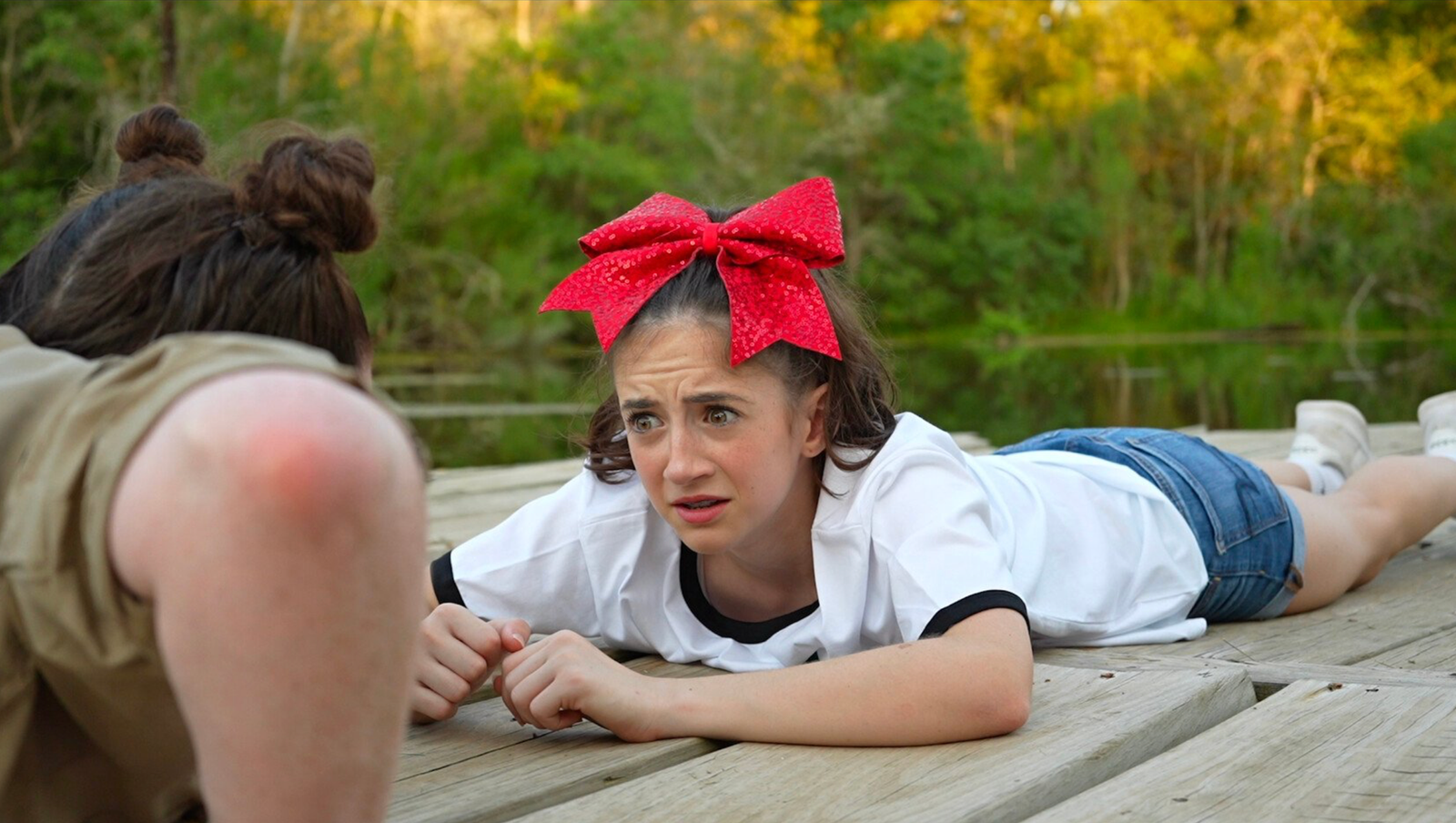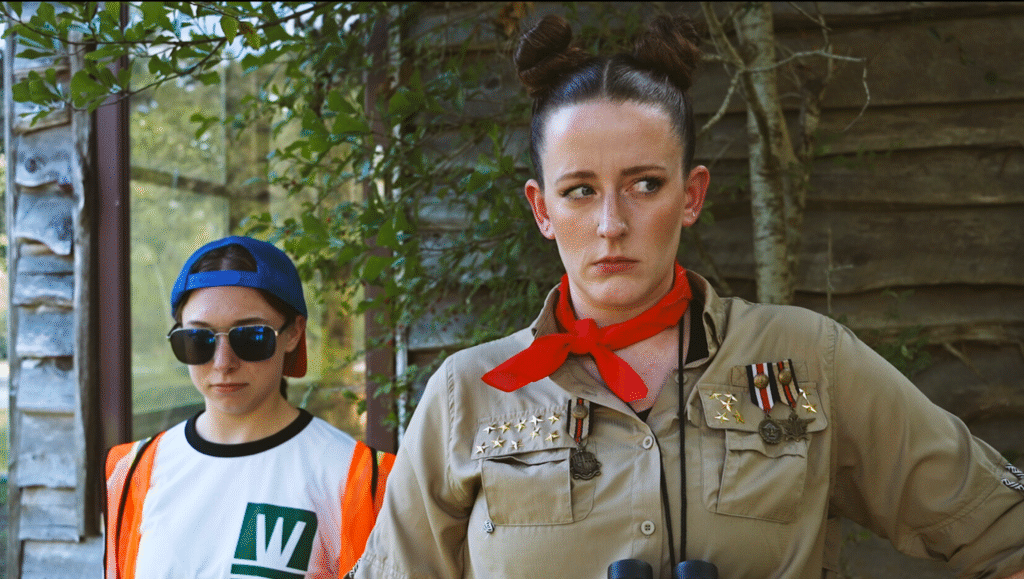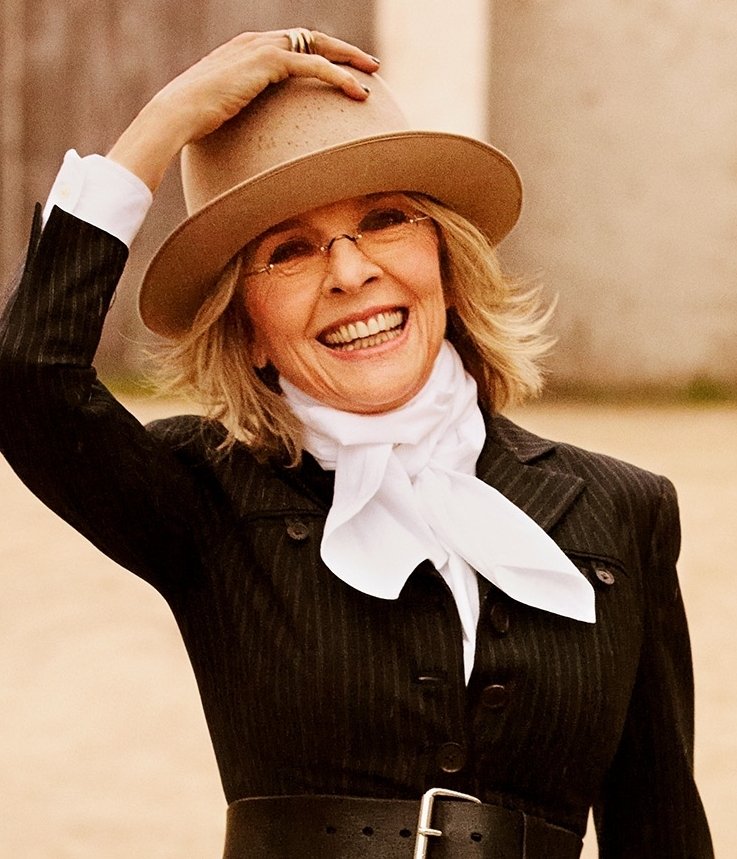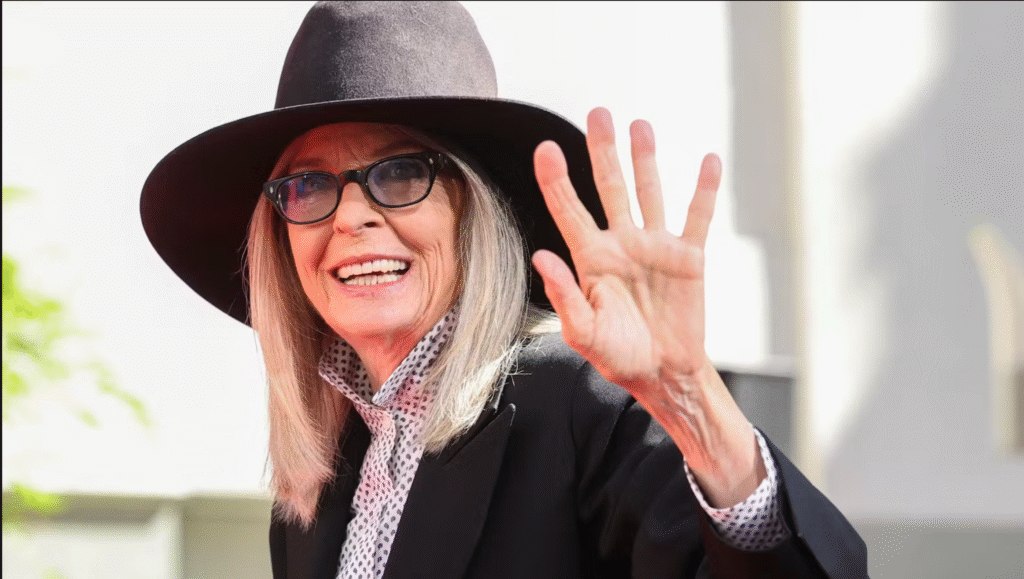Entertainment
Angela Deem Screams and Attacks Other Woman at Hotel, Because That’s What She Does on August 3, 2023 at 2:44 pm The Hollywood Gossip

In addition to being one of 90 Day: The Last Resort‘s major villains, Angela Deem has been fighting on screen for years.
She does more than screaming, yelling, cursing, flashing her breasts. Despite editors seemingly trying to cover for her, viewers have seen her become physically violent.
Unfortunately, this is not just an act for the cameras. This is part of who and what she has chosen to be.
Case in point? An alarming video appears to show Angela attacking another woman — hitting her and pulling her hair.
Angela Deem appears to be bending over while attacking her friend, (Instagram)
Unfortunately, Angela Deem is exactly who and what she appears to be. She’s not a TV persona — she’s a terror.
She and her friend, Jennifer Dilandro, got into an argument during a ride to the HIlton Garden Inn Midtown Park Avenue in the wee hours of Tuesday, August 1.
Their fight spilled over into the hotel lobby. Violently.
Angela Deem appeared on multiple phone videos in a violent altercation with friend Jennifer Dilandro at a hotel lobby. (Instagram)
It appears that Angela tackled Jennifer to the ground during the attack.
“Get the f–k off of me!” Jennifer yelled multiple times.
A hotel clerk attempted to come to her rescue, putting themselves in harm’s way just to keep them apart.
Though we have seen Angela Deem in many fights, some fans have told themselves that it’s all just an act for reality TV. Would that it were so. Her physical brawl with Jennifer Dilandro in a hotel lobby is a reminder that this is simply who she is. (Instagram)
“Get off of me! Get off of me!” Jennifer yelled.
It appeared that Angela was pulling her hair during this.
Angela largely ignored the hotel clerk during the attempt to separate them, yelling and even lunging after Jennifer.
We can see Angela Deem pointing her long nails during an ugly hotel lobby altercation. (Instagram)
Eventually, the New York Police Department arrived at the hotel.
This was a violent altercation. Officers questioned both women.
A barefoot Angela told police that she “didn’t do s–t.” We suspect that there is ample evidence to disprove that claim.
It appears that Angela Deem’s already limited clothing failed to contain her body or her fury in the hotel lobby following her violent altercation. (Instagram)
Obviously, none of this calmed Angela. When she has decided to unleash her true self upon the world, there’s no stopping her.
“F–king mob, Housewives bitch … You’ll always [wanna] be a star,” she ranted and raved by the elevator.
She was shouting at Jennifer, but also rambling to total strangers.
Following her physical fight with Jennifer Dilandro, Angela Deem ranted to strangers while seeming to fall out of her clothing. (Instagram)
“I loved you, but bitch, you just wanna be confronted with this one. So seeing my f–king ass,” Angela spat.
Unfortunately, given her attire for the evening, Jennifer was not the only one who could see it.
Angela then taunted: “You’ll never gonna be a star bitch, you’ll always wanna be a wannabe, bitch.”
Spilling out of her clothing, Angela Deem was ready to go up to her hotel room following her lobby fight. (Instagram)
“Best friend or not. I don’t need her to touch me,” Angela grumbled.
We do not know the cause of the fight or many of the details.
Authorities have yet to arrest either woman. As long as Angela continues to get away with her behavior, she will likely never stop.
Angela Deem Screams and Attacks Other Woman at Hotel, Because That’s What She Does was originally published on The Hollywood Gossip.
In addition to being one of 90 Day: The Last Resort‘s major villains, Angela Deem has been fighting on screen …
Angela Deem Screams and Attacks Other Woman at Hotel, Because That’s What She Does was originally published on The Hollywood Gossip.
The Hollywood Gossip Read More
Entertainment
California Bans AI Clones from Replacing Real Talent

California just made a dramatic stand for human creativity, defeating the threat of AI actor clones with a sweeping new law that puts people—not algorithms—back in the Hollywood spotlight. With the stroke of Governor Gavin Newsom’s pen in October 2025, the state has sent a clear message to studios, tech companies, and the world: entertainment’s heart belongs to those who create and perform, not to digital facsimiles.
California Draws a Hard Line: No More AI Clones
For months, the entertainment industry has been divided over the use of artificial intelligence in filmmaking. Studios, lured by promises of cost-cutting and creative flexibility, have invested in software that can mimic an actor’s face, voice, and even emotional range. But for performers, this wave of synthetic reproduction has triggered alarm—encouraged by chilling stories of deepfakes, unauthorized digital doubles, and contracts that let studios reuse a star’s likeness indefinitely, sometimes without pay or approval.
The new California law, anchored by AB 2602 and AB 1836, changes everything:
- Every contract must explicitly detail how studios can use digital replicas or voice models, preventing once-common “blank check” agreements that overlooked this risk.
- No one—not studios nor streaming giants—can create or release AI-generated clones of an actor, living or dead, without clear, written consent from the performer or their estate.
- The law gives families new powers to defend loved ones from posthumous deepfake exploitation, closing painful loopholes that once let virtual versions of late icons appear in new ads, films, or games.
Actors Celebrate a Major Victory
The legislation rides the momentum of the recent SAG-AFTRA strike, where real-life talent demanded control over their own digital destinies. Leaders say these protections will empower artists to negotiate fair contracts and refuse participation in projects that cross ethical lines, restoring dignity and choice in an industry threatened by silent algorithms.
Stars, unions, and advocacy groups are hailing the law as the most robust defense yet against unwanted AI replications.
As one actor put it, “This isn’t just about money—it’s about identity, legacy, and respect for real artists in a synthetic age.”
A New Chapter for the Entertainment Industry
California’s move isn’t just a victory for local talent—it’s a warning shot to studios everywhere. Companies will now be forced to rethink production pipelines, consult legal counsel, and obtain proper clearance before digitally cloning anyone. Global entertainment platforms and tech developers will need to comply if they want to do business in the world’s entertainment capital.

These laws also set a template likely to ripple through other creative fields, from musicians whose voices can be synthesized to writers whose work could be mimicked by generative AI. For now, California performers finally have a powerful shield, ready to fight for the right to shape their own public image.
Conclusion: Human Talent Takes Center Stage
With its no-nonsense ban on AI actor clones, California draws a bold line, championing the work, likeness, and very humanity of its creative stars. It’s a landmark step that forces the entertainment industry to choose: respect real talent, or face real consequences. The age of the consentless digital double is over—human performers remain the true source of Hollywood magic.
Entertainment
Chaos and Comedy: Darby Kingman’s “Camp Wackapoo: Rise of Glog”

Darby Kingman’s “Camp Wackapoo: Rise of Glog” redefines summer camp comedy with a wild, energetic story about ambition, chaos, and the joy of embracing the unexpected. The film centers on a relentlessly competitive camp counselor who’s determined to finish first—only to face a motley crew of unruly campers and a summer unlike any other.
As Darby puts it, “Not everything is that deep. It really honestly was to make people laugh. She has all these kids that are not working with her and she’s just losing her mind. It’s crazy, silly, goofy, and it was a blast.”
What started as a simple scene for Darby’s acting reel evolved into a full-fledged film with encouragement from her mentor at Debbie Reynolds Acting School. Darby dove into every role—writing, directing, starring, and meticulously preparing each prop and costume. “Plan and prepare, but also be flexible and ready to be in the moment—that’s when the magic happens,” she advises.
Working with a handpicked cast of her own dance students, Darby built an atmosphere of real teamwork and camaraderie. She credits the “precious” energy of her young cast, her creative director of photography, and the overall spirit of her production team for turning the project into something bigger than herself. Her experience is an inspiring blueprint for indie filmmakers:
“Take initiative and control of your career. You can’t just sit around and wait for somebody to pick you. Figure out what you’re good at and go for it. Create something that brings joy to others.”

Her production motto? “Preparation is key, but you have to be ready to go with the flow—that’s when the magic happens.” Darby’s fearless creativity, focus on collaboration, and love for comedy shine throughout “Camp Wackapoo: Rise of Glog.” It’s more than just a camp satire—it’s a heartfelt testament to hard work, original humor, and leadership from the ground up: “People need to laugh right now. That’s a win.”
Catch “Camp Wackapoo: Rise of Glog” and experience Darby’s infectious energy and comic genius at the Deluxe Theatre on November 1, 2025. Get your tickets now at Houstoncomedyfilmfestival.com.
Entertainment
Diane Keaton Dies at 79

The world of film and entertainment is mourning the loss of Diane Keaton, an Oscar-winning actress renowned for her enduring talent, individuality, and influence on generations of performers and fans. Keaton died at the age of 79 in California on Saturday, October 11, 2025, her family confirmed. Details remain private, with her family requesting privacy as they grieve this profound loss.

A Distinctive Talent
Diane Keaton rose to fame in the 1970s through a series of memorable roles, most notably as Kay Adams in “The Godfather” trilogy and as the quirky, unforgettable lead in Woody Allen’s “Annie Hall,” for which she won the Academy Award for Best Actress. Her performances in films like “The First Wives Club,” “Something’s Gotta Give,” and the “Book Club” series solidified her reputation as an actress with unique comedic timing and dramatic depth. Keaton was celebrated not only for her artistry but also for her androgynous fashion sense, characterized by menswear-inspired looks, hats, and an easy, effortless style that influenced generations.
Legacy and Tributes
Following the news of her passing, tributes poured in from Hollywood and beyond. Bette Midler, Goldie Hawn, and Jane Fonda were among the countless stars who expressed devastation and admiration for Keaton’s incomparable legacy. Hawn recalled their friendship and collaborations, writing: “Diane, we aren’t ready to lose you…you stole the hearts of the world and shared your genius with millions”. Midler echoed the sentiment, praising Keaton as “brilliant, beautiful, extraordinary” and a truly original presence in Hollywood.

Private Struggles and Final Months
Though fiercely independent and known for her openness, Keaton kept her declining health private in her final months. Friends and neighbors noticed her retreat from public life and social media, and she was recently seen less often in her Brentwood neighborhood. In the past, Keaton candidly discussed her ongoing battles with skin cancer and bulimia, openly advocating for personal health and authenticity.
Remembering Diane Keaton
Diane Keaton leaves behind a legacy defined by her fearless performances, unique style, and enduring influence on the arts. She is survived by her two children, Dexter and Duke. As Hollywood and her global fanbase mourn, her pioneering spirit and unmistakable voice will continue to inspire generations.

 Business3 weeks ago
Business3 weeks agoDisney Loses $3.87 Billion as Subscription Cancellations Surge After Kimmel Suspension

 Entertainment3 weeks ago
Entertainment3 weeks agoWhat the Deletion Frenzy Reveals in the David and Celeste Tragedy

 Entertainment4 weeks ago
Entertainment4 weeks agoABC Suspends ‘Jimmy Kimmel Live!’ Indefinitely After Kirk Remarks

 Entertainment3 weeks ago
Entertainment3 weeks agoExecutive Producer Debut: How Celia Carver Created Festival Hit ‘Afterparty’

 Business4 weeks ago
Business4 weeks agoThe Rise Of Bullsh*t Jobs: Why Gen Z Hates Work

 Health3 weeks ago
Health3 weeks agoRussia Claims 100% Success With New mRNA Cancer Vaccine

 Film Industry4 weeks ago
Film Industry4 weeks agoCan Movie Theaters Steal the Show from Streaming?

 News4 weeks ago
News4 weeks agoBody of Missing Teen Found in Tesla Linked to Musician D4vd





























